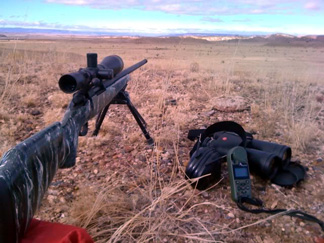

 The Accurate Reloading Forums
The Accurate Reloading Forums  THE ACCURATE RELOADING.COM FORUMS
THE ACCURATE RELOADING.COM FORUMS  Rifles
Rifles  Long Range Shooting
Long Range Shooting  Full Case Prep For Long Range Accuracy
Full Case Prep For Long Range AccuracyGo  | New  | Find  | Notify  | Tools  | Reply  |  |
| One of Us |
Had a discussion with a friend about this topic and where it should go here on the Forums. Since Long Range Shooting has accuracy demands that probably exceed those for hunting at average ranges, I decided to post here instead of the Reloading Forum. I proved something to myself last weekend quite by accident. Something that I've always felt to be true and have taken as fact from friends here and other reading on the 'net and manuals. The issue is the value of fully preping your cases for the best possible accuracy in your finished loaded rounds. What I do for "full case prep" is: These steps are taken with virgin brass. The brass needs to be fire-formed to your chamber. I use the "Cream O' Wheat" method instead of firing bullets to save on barrel wear. Still, even a couple of full pressure loads with a bullet are needed to fully stretch the brass to give you the "crush fit" in your chamber that I also believe is essential to the best accuracy. Of these steps, I believe that neck turning may have the most benefit. Varmint Al believes it will shrink groups by 50% even for factory chambers. It has bearing on uniform neck tension.   Varmint Al also states that trimming your necks uniformly and not too short will improve accuracy. I recently purchased the Sinclair Chamber Length Gauges for every caliber to accurately determine all of my rifle's chambers actual length. Most chambers are much longer up to .070" over the recommended "trim to" length for the case in question.  Another crucial thing I believe is the proper neck tension for the bullet. Choosing the correct bushing for your die (if you are using a bushing sizer) may prove to tighten your groups. The best neck tension for accuracy may vary, but as you will see in the photos, my rifle likes very little. .001". The instructions for proper bushing choice for Redding Dies is to measure the outside neck of a loaded round, subtract .001" for the correct sizing bushing. Annealing the case neck and shoulder will go far in keeping neck tension consistent between firings. I anneal every 3 firings. Here are some photos of the test  All of these cartridges were loaded identically with the components. 41.2 grains H-4350, WLR primer, 139 gr Lapua Scenar 6.5mm. All of the brass was sized without changing the die any. 90% of the neck was sized but the shoulder was not moved. The first group I shot was after the barrel was thoroughly cleaned and was with my old brass that was fully prepped as described. The brass had a great "crush fit" as well, so it was fire-formed perfectly. Neck tension was .001" with the .290" bushing and the floating carbide expander ball never touched the ID of the case neck when being withdrawn. The first shot (clean, cold bore) was .5" left, then the big hole 5 shot group was fired....  I then proceeded to shoot some groups with brass in other stages of firing and prep. The next group was with once fired brass that had absolutely no prep. Honestly I expected it to shoot well even though no prep was done. The concentricity was phenomenal. Neck tension was greater at .002".....  The next group was fired with brass that was twice-fired and no prep as above....  After shooting that group, I thought maybe something was wrong. I really believed that the brass with no prep would shoot just as well since it was fired in such a fine rifle I had 5 more shells loaded in the fully prepped brass and decided to shoot another group. I expected results like the brass with no prep, but instead....  4 shots in the tiny hole with one out. It was enough to show me the value of full case prep to accuracy. woods should chime in with more pics and tips. We can all learn a bunch from him that will help in the quest for the best accuracy possible in our long range loads.  700 yard 4-shot group. Any more input? | ||
|
One of Us |
All very good and excellent results! Normally I don't butt in on this long range stuff since I don't do a lot of it and I'll freely admit there are many here who know more about it than me. But the topic is about case prep and since I am a certified case prep nut The only part you missed that is of utmost import is stabilizing your velocity and trying to get as low an extreme spread as you can get in order to minimize vertical spread at distances, especially 1000 yds or so. I chased that particular rabbit back to it's hole a couple of years ago and although he pops out occasionally, I have managed to shoot many strings of 5 shots that have been in the single digits. To do that I concentrated on bullet grip consistancy, surface prep on the inside of the neck, consistant work hardening of the neck, minimizing bullet seating depth variation and dry lubing. Bullet grip consistancy - For me it is all about the Lee Collet Neck Sizer. As you know I gauge all my necks with pin gauges 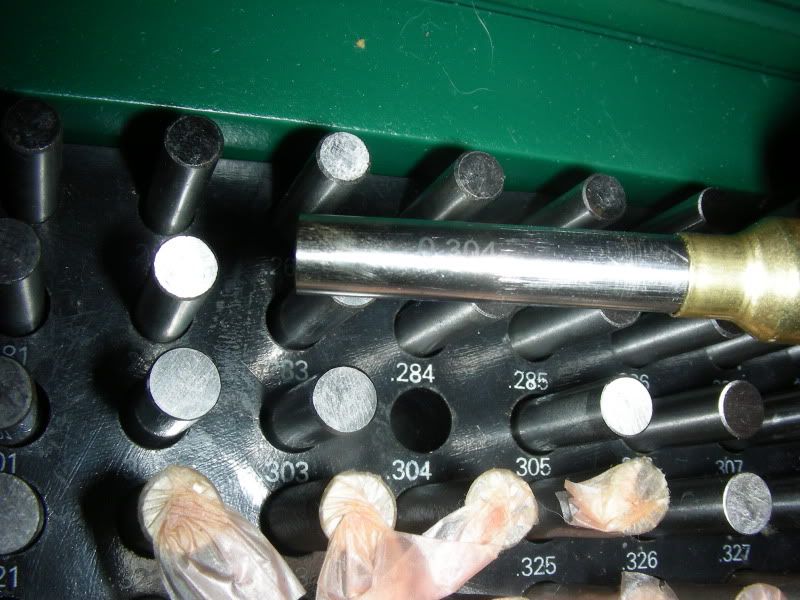 which will give you more information than just the particular pin that goes in. IOW, a pin can go in tight, loose or just right and you can compare that to other case necks to gauge consistancy to a smaller degree than .001". The Lee Collet give a 100% consistant neck ID since all the variations are pushed to the outside of the neck. Expander balls do OK but bushing dies without expanders do not do as well. It is almost impossible to outside neck turn to a 100% consistant neck thickness. If you could then bushing dies without expanders would do better. And I noticed that you got good results from only .001" bullet grip. That is a recurring theme promulgated by Lee and used by many benchresters (so I'm told). Correct me if I'm wrong but isn't the benchrest mantra to seat into the lands with very little bullet grip? Personally since I reload for hunting then I prefer a grip of .003" which has still produced excellent results with all the other preps listed below. Surface prep on the inside of the neck - Outside neck turning and especially inside neck reaming will tear up the inside of the neck 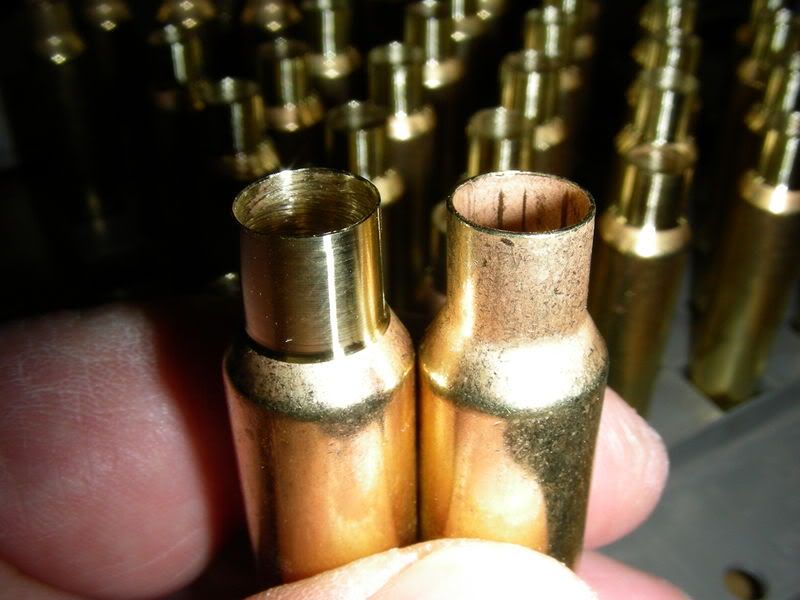 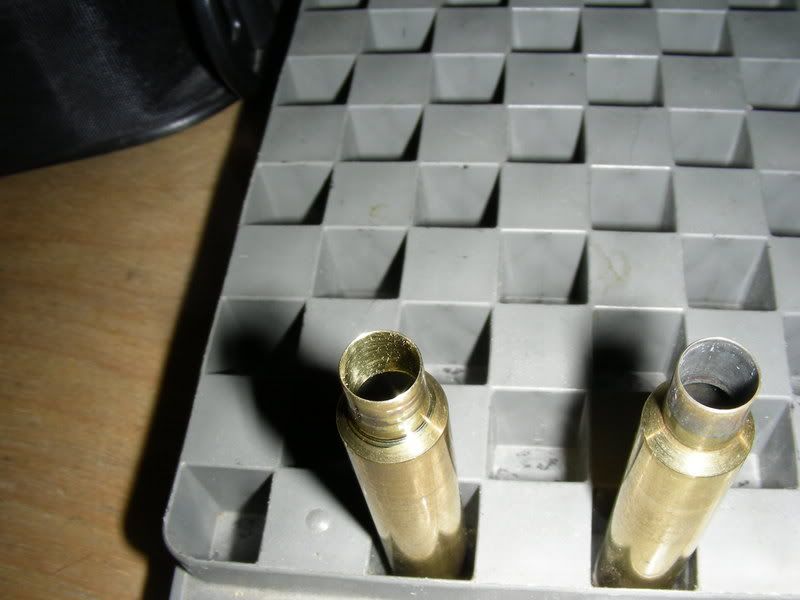 you need to smooth this out. These circular burrs and scratches will play holy hell with bullet grip. I use a Zip Trim and Scothcbrite (steel wool is dirtier and even has oil on it to prevent rust but works well also) 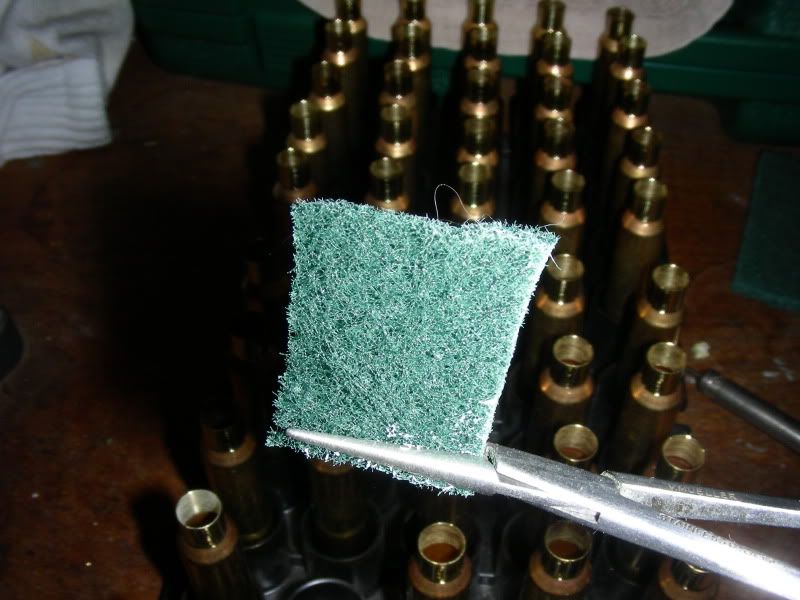 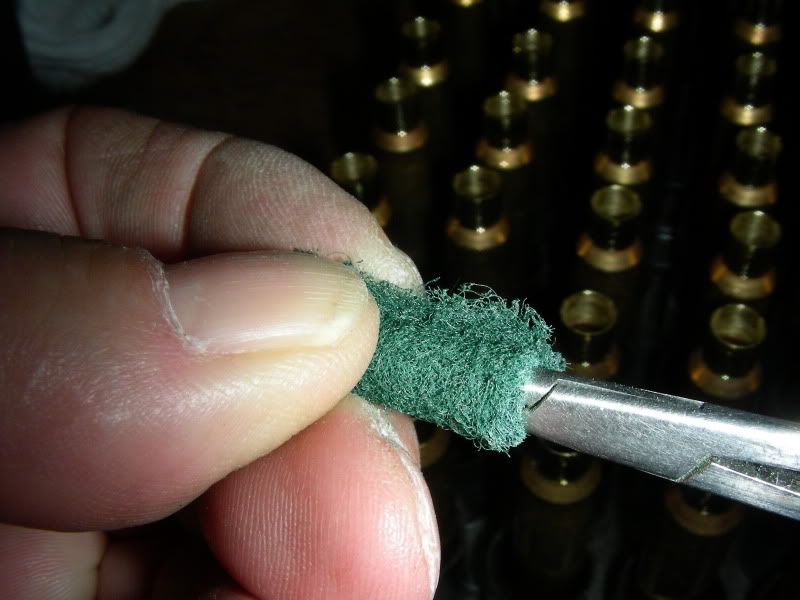  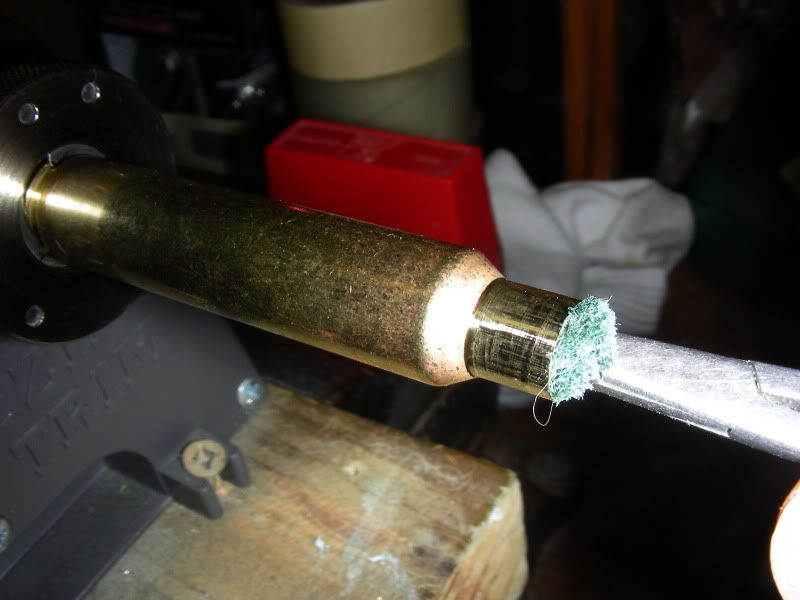 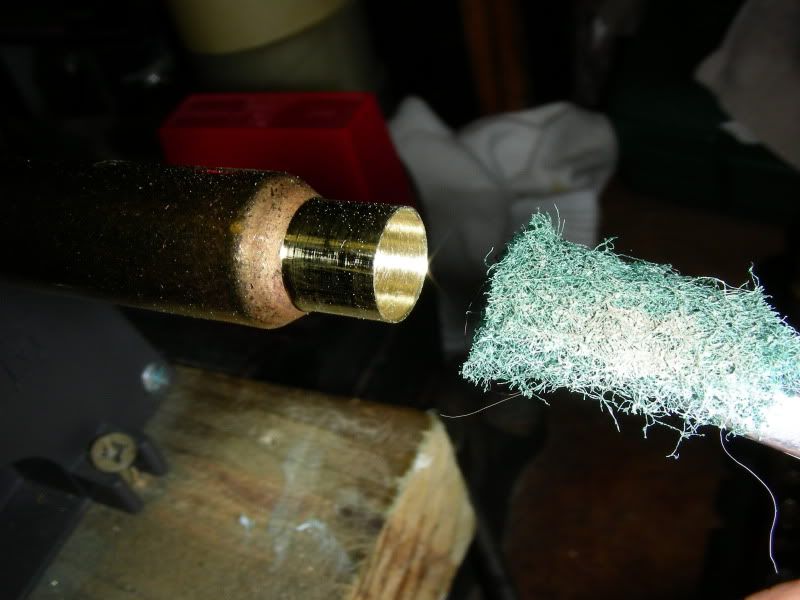 Consistant work hardening of the neck - Of course this means annealing. I have seen the results of lowered seating depth variations from annealing on every reloading after the 3rd. Minimizing seating depth variations - All of the above will help but in addition you need to sort your bullets according to bearing length  I have seen Accubonds that vary considerably by as much as .02" and that will play hell with seating depth and velocities. Most boxes of bullets will have a variance of .005" or so, even good ones. Dry lubing - I prefer mica but have used Imperial Dry Lube also 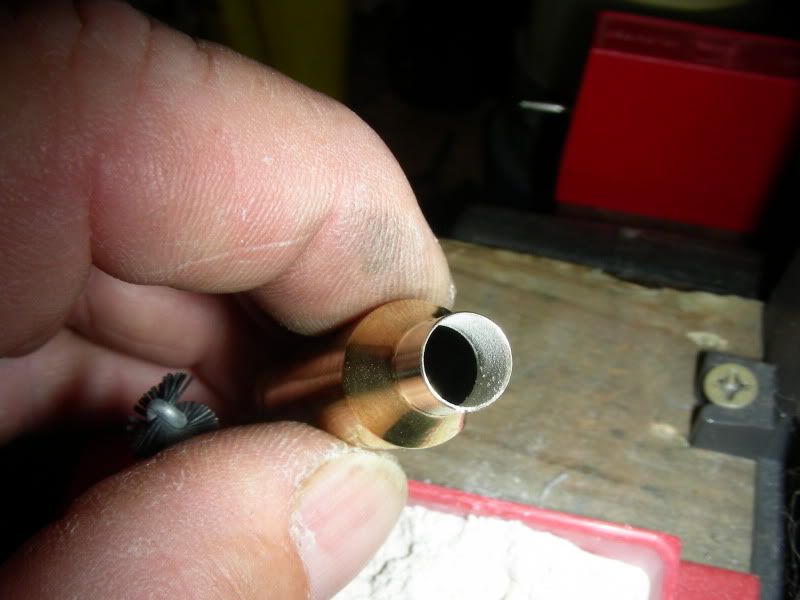 this eases the bullet seating and will lead to lower bullet seating depth variation. Not too long ago I shot this 6 shot sequence with my 338RUM 3191 3182 3182 3189 3189 3197 The load was too hot and I lost the primer pockets (even though under max in the manuals) but it did shoot good at 200 and 300 yds. One thing about outside neck turning you need to know. It will not center the neck in a case with a lot of variance in neck thickness 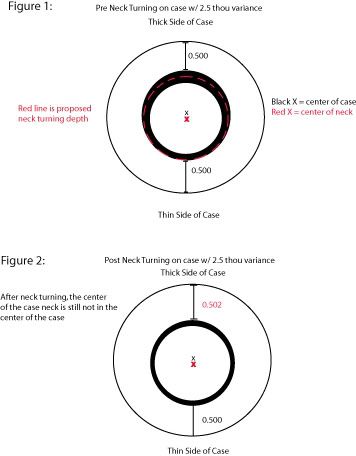 so you need to turn on new cases. The firing of the case will then recenter the turned neck for subsequent firings. And don't be skeered of a full turn 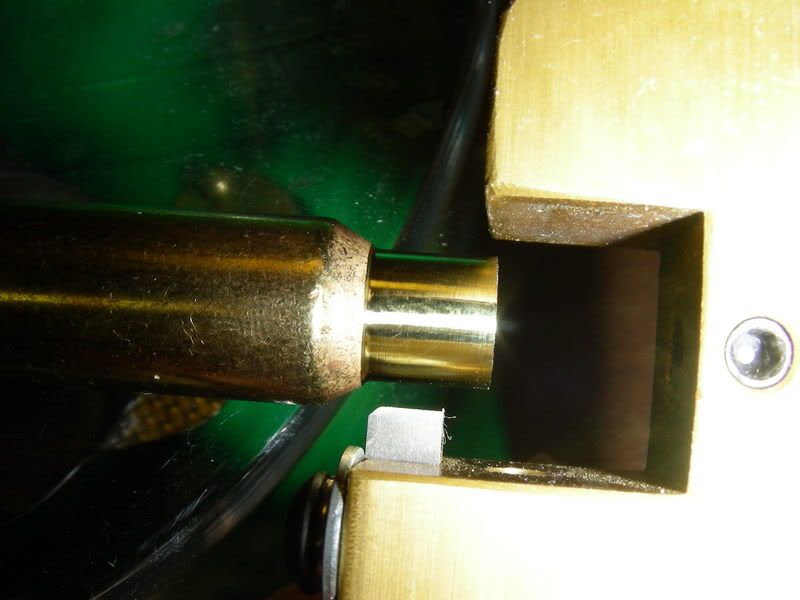 As long as you maintain a neck thickness of .012" or more, what's the difference? ____________________________________ There are those who would misteach us that to stick in a rut is consistency - and a virtue, and that to climb out of the rut is inconsistency - and a vice. - Mark Twain | Chinese Proverb: When someone shares something of value with you and you benefit from it, you have a moral obligation to share it with others. ___________________________________ | |||
|
| One of Us |
From 24 hr campfire....quite lengthy, 4 threads from the same author Case prep Bullet sort Finding a start OA Powdering ________________________________________________ Maker of The Frankenstud Sling Keeper Proudly made in the USA Acepting all forms of payment | |||
|
| one of us |
My two cents: I weigh cases after I neck turn them and sort them into groups. Over doing neck turning will result is having to anneal a more often - or throwing away the brass. | |||
|
| One of Us |
Excellent threads ted! Great pics and info woods! | |||
|
| one of us |
If you are not Weight Sorting, you might as well take up Tiddly-Winks. | |||
|
One of Us |
Good tip I got was to buy 300 pieces or so of brass, weight sort and sell off the remaining new cases for a small loss. With Lapua brass I end up around 100-150 pieces of identical, to within 0.1gr, brass. I keep trying to think of a way in which case weight is not directly proportional to case volume, but thankfully have so far drawn a blank. I read about a guy who batches by water volume, but for me at least, life is too short. | |||
|
One of Us |
 Well you have to have the right thingy's to measure your squidgers in order to get into long range tiddly winks!  ____________________________________ There are those who would misteach us that to stick in a rut is consistency - and a virtue, and that to climb out of the rut is inconsistency - and a vice. - Mark Twain | Chinese Proverb: When someone shares something of value with you and you benefit from it, you have a moral obligation to share it with others. ___________________________________ | |||
|
| One of Us |
woods, Do you weight sort? Think it matters like HC? He thinks weight sorting and primer pocket cutting is more important than uniforming brass neck thickness for consistent bullet grip (neck turning) | |||
|
| One of Us |
I'm turning a batch of new brass right now. I forgot how time consuming it was. Hopefully will get done today so I can COW fireform tomorrow. I'm thinking of COW'ing the batch of brass I oversized too. Accuracy was so much better with the crush fit. Hopefully I'll be able to save most of it.  | |||
|
One of Us |
In my experience, of not owning any tight necked chambers, neck reaming seems to be at or a little beyond the point of diminishing returns. In my rifles, good brass ( Lapua, RWS, or Norma) seems to work just as well without neck turn, as an isolated variable, than as with. Perhaps this is what HC is getting at? | |||
|
| One of Us |
Funny thing about sorting brass and uniforming. Some years ago John Ambler who shot Hunter Bench Rest in Colorado won the HBR National Championship. Full length 308 case. John took seven cases (pickup) at random from the old Coors range in Golden. He took them back to his gun room, FL sized them, trimmed them to length, and turned the case necks. He shot them at half a dozen matches, 100/200/300 yds. He won the Nats that year with those cases. One each, Speer/DWM, Federal, WW, Remington, and some other commercial, and the other two different lot military head stamped. He sent a letter to Dave Brennan, editor of Precision Shooting Magazine telling the story. Dave printed that letter with his comments about the issue. Always thought that was funny. Rich | |||
|
| One of Us |
I don't think it's in the BWDT Reloading Manual. If you check upstairs here in my original post, I believe that neck tension has a lot to do with accuracy. Neck turning even for factory chambers aids consistent neck tension around the circumference of the neck | |||
|
| One of Us |
I honestly don't do very much case prep. At short ranges I may be able to see an improvement, but with a 308 nearing 1000 yards (and not shooting in a competition) I believe my skills are not good enough to see the benefit, and compensate me for the extra time I spent. Then again, you may have a legendary group with 4 in a couple inches at 1k, then you wonder if the one that went out of the group had a funky neck or something. Love shooting precision and long range. Big bores too! Recent college grad, started a company called MK Machining where I'm developing a bullpup rifle chassis system.  | |||
|
| One of Us |
Exactly. There are so many things that may or may not be the cause and are not even limited to the quality of the ammo itself. I'm on board with woods' case prep program though because I've seen the difference for myself. The name of the game is consistency | |||
|
| Powered by Social Strata | Page 1 2 3 |
| Please Wait. Your request is being processed... |
|
 The Accurate Reloading Forums
The Accurate Reloading Forums  THE ACCURATE RELOADING.COM FORUMS
THE ACCURATE RELOADING.COM FORUMS  Rifles
Rifles  Long Range Shooting
Long Range Shooting  Full Case Prep For Long Range Accuracy
Full Case Prep For Long Range Accuracy

Visit our on-line store for AR Memorabilia

